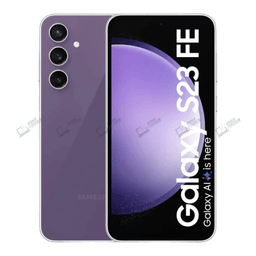
Snapdragon 8 Gen 3 vs Dimensity 9300: Who is the Best in Gaming?
The Qualcomm Snapdragon 8 Gen 3 is currently the best option for gaming. It delivers stronger graphics performance, better heat control, and smoother overall optimization for gamers. In comparison, the MediaTek Dimensity 9300 offers higher raw CPU power and better multi-core results, but it tends to struggle with heat during long gaming sessions. So, if you’re into heavy or extended gaming, smartphones powered by the Snapdragon 8 Gen 3 are the smarter choice.
Flagship Showdown
Mobile gaming has reached a whole new level. Right now, the two strongest rivals in this field are the Qualcomm Snapdragon 8 Gen 3 and the MediaTek Dimensity 9300. These top-tier processors power most of today’s high-performance gaming smartphones.
A New Definition of Power
The Snapdragon 8 Gen 3 chipset shows Qualcomm’s strong experience in mobile performance. It delivers an impressive balance of power and efficiency, making it faster and smoother than the Snapdragon 8 Gen 2. From our analysis, this new generation has truly redefined the gaming experience with its improved speed and graphics performance.
Why Does This Comparison Matter?
The performance of these chipsets affects not only how fast your games run but also how well your phone manages battery life and heat. Today, everyone wants a phone that can handle heavy, graphics-rich games without lag. That’s why this detailed comparison is important to find out which chipset is best for your gaming needs.
Under the Hood: Key Specs & Architecture
The design and core setup of a chipset play a big role in how well it performs in gaming. The two chipsets have some key differences in their overall architecture.
CPU Configuration: Differences in Core Layout
Snapdragon 8 Gen 3
- According to Benchmark Aggregators: AnTuTu ~2,087,159 points.
- Geekbench 6: Single‑core ~2.18K, Multi‑core ~6.43K in some tests.
- Graphics: In 3DMark “Wild Life / Solar Bay” tests, this chip shows ~31‑53% uplift over previous generations.
- Thermal Behaviour: In benchmarking, some phones with this chipset reached ~49‑52 °C under heavy load (benchmark stress) in real tests.
- Gaming Case: One source said while running a demanding title (e.g., Genshin Impact), the Snapdragon 8 Gen 3 maintained ~43.2 °C as the device temperature in one setup.
Dimensity 9300
- Specification: 4× Cortex‑X4 up to ~3.25GHz + 4× Cortex‑A720 up to ~2.0GHz, 4nm process.
- Benchmark: Comparative scores show Dimensity 9300 (and 9300+) matching or slightly ahead in some multi‑core tests versus Snapdragon 8 Gen 3. E.g. Notebookcheck shows 8‑core score ~7 117 for Snapdragon and ~7 135 (9300+) for Dimensity.
- Thermal & Throttling Risk: In a stress test, the Dimensity 9300 reportedly lost up to 46% of its performance due to thermal throttling.
- Real‑World Gaming Surface Temps: One report said that under extended use the device stayed around 43 °C for real‑gaming, though it still “ran hotter than its Qualcomm rival” in extended sessions.
GPU Power: The Real Battle Lies in Graphics
Adreno 750
- The Adreno 750 is integrated into the Snapdragon 8 Gen 3 SoC, fabricated on a 4nm process by TSMC.
- Qualcomm claims a performance bump of “up to 25%” over its predecessor (Adreno 740) in its official materials.
- Adreno 750 supports advanced features: the architecture supports hardware ray tracing features and more.
According to NotebookCheck’s comparisons:
- In 3DMark “Wild Life Unlimited”, Adreno 750 averaged ~18,681 points, compared to ~17,328 for Immortalis‑G720 (MP12 variant) on the tested device.
- Power consumption tests (GFXBench Aztec Ruins Normal Tier Offscreen) showed Adreno 750 using ~9.2W on average, while Immortalis‑G720 used ~12.7 W. So in this test, Adreno is more powerful‑efficient.
Immortalis‑G720
- ARM states that the Immortalis‑G720 supports hardware‑based ray‑tracing, Variable Rate Shading (VRS), Deferred Vertex Shading (DVS) and was designed to deliver a ~15% performance per watt improvement over its predecessor G715.
- ARM claims that DVS may reduce memory bandwidth usage by up to 40%, which helps sustain performance and power efficiency.
- While the Immortalis‑G720 (MP12) trailed the Adreno 750 slightly in raw performance, it was still very close on many metrics and showed competitive power figures in certain contexts.
3DMark Stress Test: Measuring Sustained Power
The 3DMark Stress Test shows that the Dimensity 9300 can achieve very high performance, but after 30 minutes of heavy gaming, its stability can drop below 50%. On the other hand, the Snapdragon 8 Gen 3 stays more consistent, which really matters for long gaming sessions.
True Test for Top-Tier Mobile Processors Ranking
For gaming, the GPU matters even more than the CPU. The main contenders are Qualcomm's Adreno 750 and MediaTek's Immortalis-G720. Both are very powerful, but the Adreno 750 holds a slight edge in long sessions, especially with Ray Tracing. With new chips like the rumored Snapdragon 8 Elite Gen 5, Apple A19 Pro, MediaTek Dimensity 9500, and Google Tensor G6 on the horizon, stability is more important than ever.
In stress tests, the Dimensity 9300 performs incredibly well at first, but its performance drops more noticeably over time. The Snapdragon 8 Gen 3 stays more consistent, giving you better performance during long gaming sessions. Sustained power is what really makes the difference for serious gamers.
Synthetic Benchmarks: Raw Power Score
Benchmark scores mainly show the chipset's potential. They don’t tell the whole story about real-world performance, but they give a good idea of what to expect.
|
Chipset |
Benchmark / Metric |
Approximate Score |
|
Snapdragon 8 Gen 3 |
AnTuTu v10 (Total) |
~2.13 million points |
|
Snapdragon 8 Gen 3 |
Geekbench 6 (multi-core) |
~7,100-7,300 points |
|
Snapdragon 8 Gen 3 |
3DMark? GPU Metrics |
N/A (but strong lead in graphics tests) |
|
Dimensity 9300 |
AnTuTu v10 (Total) |
~2.20-2.30 million points |
|
Dimensity 9300 |
Geekbench 6 (multi-core) |
~7,400-7,500 points |
|
Dimensity 9300 |
3DMark Wildlife Extreme |
~4,600-4,800 points (≈ 25–30 fps) |
Note: Snapdragon leads slightly in AnTuTu, but Dimensity's All-Big-Core design often results in higher Geekbench Multi-Core scores.
Real-World Gaming Performance Test
Do benchmark scores really reflect how games run in real life? We looked at the performance of the most demanding games to find out.
Heavy AAA Titles: FPS and Stability
In popular games like Genshin Impact and Honkai: Star Rail, both chipsets run around 60 FPS. However, Snapdragon 8 Gen 3 phones tend to have fewer FPS drops during long gaming sessions because more games are optimized for Qualcomm Snapdragon than for MediaTek.
Competitive Shooters: The Zero-Lag Experience
Latency and touch response are very important when playing competitive games like PUBG Mobile or Call of Duty Mobile.
- Snapdragon Elite Gaming: This feature set from Qualcomm ensures smooth gameplay, enhanced sound quality, and fast response times.
- MediaTek HyperEngine: The Dimensity 9300's technology is also highly effective. It focuses specifically on network stability and battery efficiency.
The Gamer's Critical Factors (Thermal & Efficiency)
Thermal management and efficiency are two of the most important factors in a gaming chipset.
Thermal Throttling: The True Test
The Dimensity 9300’s “All-Big-Core” design makes heat control more difficult. Since it lacks smaller efficiency cores, the main cores use more power even during light tasks. As a result, the chip tends to heat up faster and may throttle during long gaming sessions. On the other hand, the Snapdragon 8 Gen 3’s hybrid core setup and efficient Adreno GPU handle heat much better.
Battery Drain Test: Companion for Long Gaming
Both chips use the same 4nm process, but the Snapdragon 8 Gen 3’s 1+5+2 core structure is more power-efficient. It consumes less battery, especially when you’re not running heavy or graphics-intensive games.
Which Flagship Phones are Available in Bangladesh?
Bangladesh’s smartphone scene is full of powerful flagship devices that deliver top performance. If you want great gaming, smooth multitasking, and the latest technology, look for phones with Snapdragon 8 Gen 3 or Dimensity 9300 processors.
|
Model |
Processor |
Android Version |
|
Qualcomm Snapdragon 8 Gen 3 |
Android 14, up to 7 major Android upgrades |
|
|
Qualcomm Snapdragon 8 Gen 3 |
||
|
Qualcomm Snapdragon 8 Gen 3 |
Android 14, up to 4 major Android upgrades |
|
|
Qualcomm Snapdragon 8 Gen 3 |
Android 14, up to 2 major Android upgrades |
|
|
Qualcomm Snapdragon 8 Gen 3 |
Android 14, up to 4 major Android upgrades |
|
|
MediaTek Dimensity 9300+ |
Android 14 |
Final Thoughts
After comparing both chipsets from every angle, it’s clear that the Snapdragon 8 Gen 3 stands out as the ultimate gaming champion. Its stronger GPU stability, better thermal control, and wider game optimization make it the more reliable choice for serious gamers. While the Dimensity 9300 offers impressive raw performance and AI capabilities, it struggles to maintain consistent performance during long sessions.
If your goal is smooth, sustained, and professional-level gaming, the Snapdragon 8 Gen 3 is the clear winner. However, if you prioritize AI-driven power and peak performance bursts, the Dimensity 9300 is still a solid alternative. Overall, for the best and most balanced gaming experience, go with a flagship phone powered by the Snapdragon 8 Gen 3.









